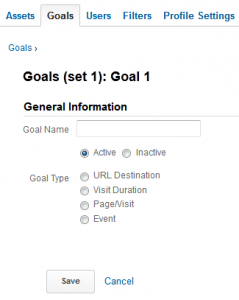Four PPC Advertising Myths
When it comes to Paid Search, advertisers often believe things that aren’t actually true. Don’t worry, we’re here to make sure you are able to identify myth from fact. Below are four myths that PPC advertisers often believe to be true.
1. I don’t sell anything so I don’t have a conversion point, or I only have one conversion point
All too often I run into advertisers who believe this is the case, but it’s not. If you have a website, you have some sort of measurable action or

activity on that site. Bottom line, you should be measuring some sort of action taken by visitors so that you can get a true understanding of what visitors are doing once they land on your site.
A few examples of conversions points other than a purchase are:
- Newsletter Sign-Up
- E-Mail Signup
- Get Information
- Free Trial Download
- Whitepaper Download
If you’re tracking conversions via Google AdWords, you can easily create a conversion tracking code right from the interface that should then be pasted on the page that a visitor lands on after he or she completes the conversion on your site. This would typically be a ‘thank you’ or ‘confirmation’ type page.

If you’re using Google Analytics, you have a few more options in terms of setting up goals to track. The four goal types that can be set up through Google Analytics are:
- URL Tracking – Thank you pages, confirmation pages
- Visit Duration – How long someone was on your site
- Pages/Visit
- Event
With the plethora of tracking options available to advertisers using Google Analytics (which advertisers can get for free), there’s no reason websites shouldn’t have some sort of goal tracking set up to truly understand advertising and landing page effectiveness.
2. Last click is most important
Thanks to conversion funnel reports in Google AdWords and Google Analytics, advertisers have no excuse as to why they aren’t considering the true value of a keyword, ad group, or campaign, regardless of whether or not it closed a sale or conversion. Back in the ancient days of PPC advertising, advertisers gave all the credit of a sale or another conversion point to the medium that closed the sale or conversion. This meant that if a PPC ad received a click from a visitor that came back days or months later through an organic listing, the organic listing received credit for that sale. Or, if a non-brand PPC keyword captured a visitor who later returned to the site and converted through a brand PPC keyword, the brand keyword received the credit. In this day and age, this should never be the case. Advertisers should always be looking at conversion funnel reports to see where in the conversion path different mediums or keywords may have played a role. Get familiar with attribution modeling, which will allow you to apply values to all mediums and keywords that were important in driving a goal completion on your site. Just because non-brand keywords may not seem to be driving many last-click conversions, check to see how they may be playing a role as introducers or influencers.
3. I shouldn’t bid on keywords that don’t get loads of traffic
Always remember the value that can be gained through long-tail keywords, which more often than not will have much lower traffic than short tail and more generic keywords. Just because a keyword doesn’t generate a large amount of traffic doesn’t mean you shouldn’t bid on it. If the keyword is relevant and is working well for your business, bid on it, even if the positive effect it has is just a small one. Long-tail keywords may generate just a few visits, but those visits will be highly qualified and often more likely to result in a goal completion (and normally at a lower CPC than more generic terms that may have captured the search query). Quality traffic, lower CPCs – what’s not to like about long-tail keywords?
4. More is always better
All PPC advertisers have a certain goal in mind, whether it be traffic, conversions, or other. The mistake many advertisers make is to focus strictly on increasing the numbers, forgetting how much they might actually be paying for their goals. We all want to meet our goals, and that’s what we’re here to do – but it’s key to ensure you’re meeting your goals efficiently. You may be happy that you’re seeing 100 goal completions each month, but how much are you paying for each of those conversions? Is the cost within your means? Pay attention to those numbers, and see if there are ways you are able to drive a strong number of conversions or visits while decreasing costs as well. If you’re generating 15 conversions a week at $1,000/conversion when you know a conversion is only worth $300, then more isn’t necessarily better. Keep testing, keep optimizing, until you achieve your goals at a cost that is still profitable for your company.
Remember that in PPC things aren’t always as they seem. Dig deep into your analytics data to discover more about your site and how visitors interact with it, and don’t fall victim to the misconceptions outlined above.


